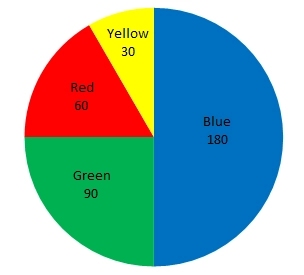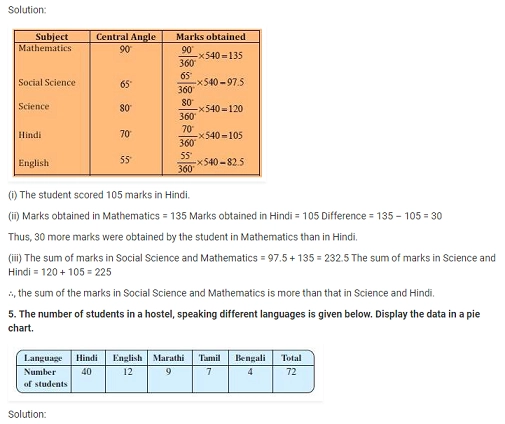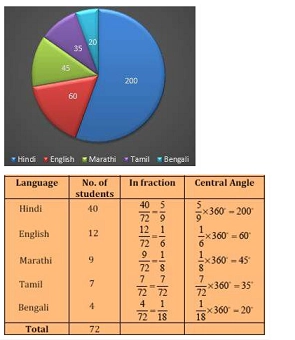Exercise 4.2 Page: 82
1. A survey was made to find the type of music that a certain group of young people liked in a city.
Adjoining pie chart shows the findings of this survey. From this pie chart, answer the following:
(i) If 20 people liked classical music, how many young people were surveyed?
(ii) Which type of music is liked by the maximum number of people?
(iii) If a cassette company were to make 1000 CD’s, how many of each type would they
make?

Solution:
(i) 10% represents 100 people.
⟹20% represents = (100×20)/10 = 200
∴, 200 people were surveyed.
(ii) Since 40% of the total people surveyed liked light music and no other form of song liked more than that, we can conclude that Light music is liked by the maximum number of people.
(iii) CD’s of classical music = (10 × 1000)/100 = 100
CD’s of semi-classical music = (20 × 1000)/100 = 200
CD’s of light music = (40 × 1000)/100 = 400
CD’s of folk music = (30 × 1000)/100 = 300
2. A group of 360 people were asked to vote for their favorite season from the three
seasons rainy, winter and summer.
(i) Which season got the most votes?
(ii)Find the central angle of each sector.
(iii) Draw a pie chart to show this information

Solution:
(i) According to the table given in the question, Winter season got the most votes.
(ii) Central angle of summer season= (90×360)/360= 90o
Central angle of rainy season= (120×360)/360= 120o
Central angle of winter season= (150×360)/360= 150o
(iii)



4. The adjoining pie chart gives the marks scored in an examination by a student in Hindi, English, Mathematics, Social Science and Science. If the total marks obtained by the students were 540, answer the following questions.
(i) In which subject did the student score 105 marks?
(Hint: for 540 marks, the central angle = 360°. So, for 105 marks, what is the central angle?)
(ii) How many more marks were obtained by the student in Mathematics than in Hindi?
(iii) Examine whether the sum of the marks obtained in Social Science and Mathematics is more than that in Science and Hindi. (Hint: Just study the central angles).


